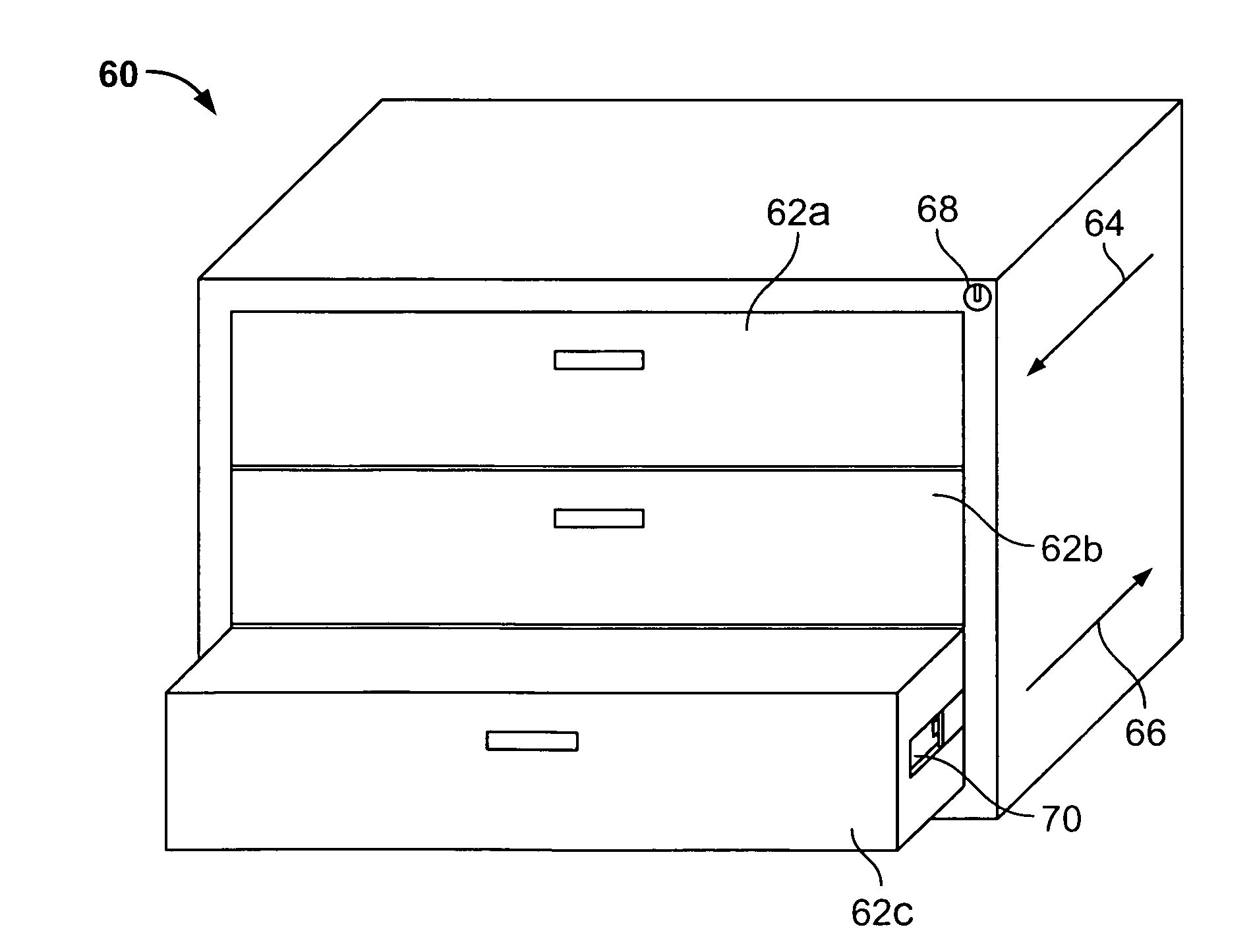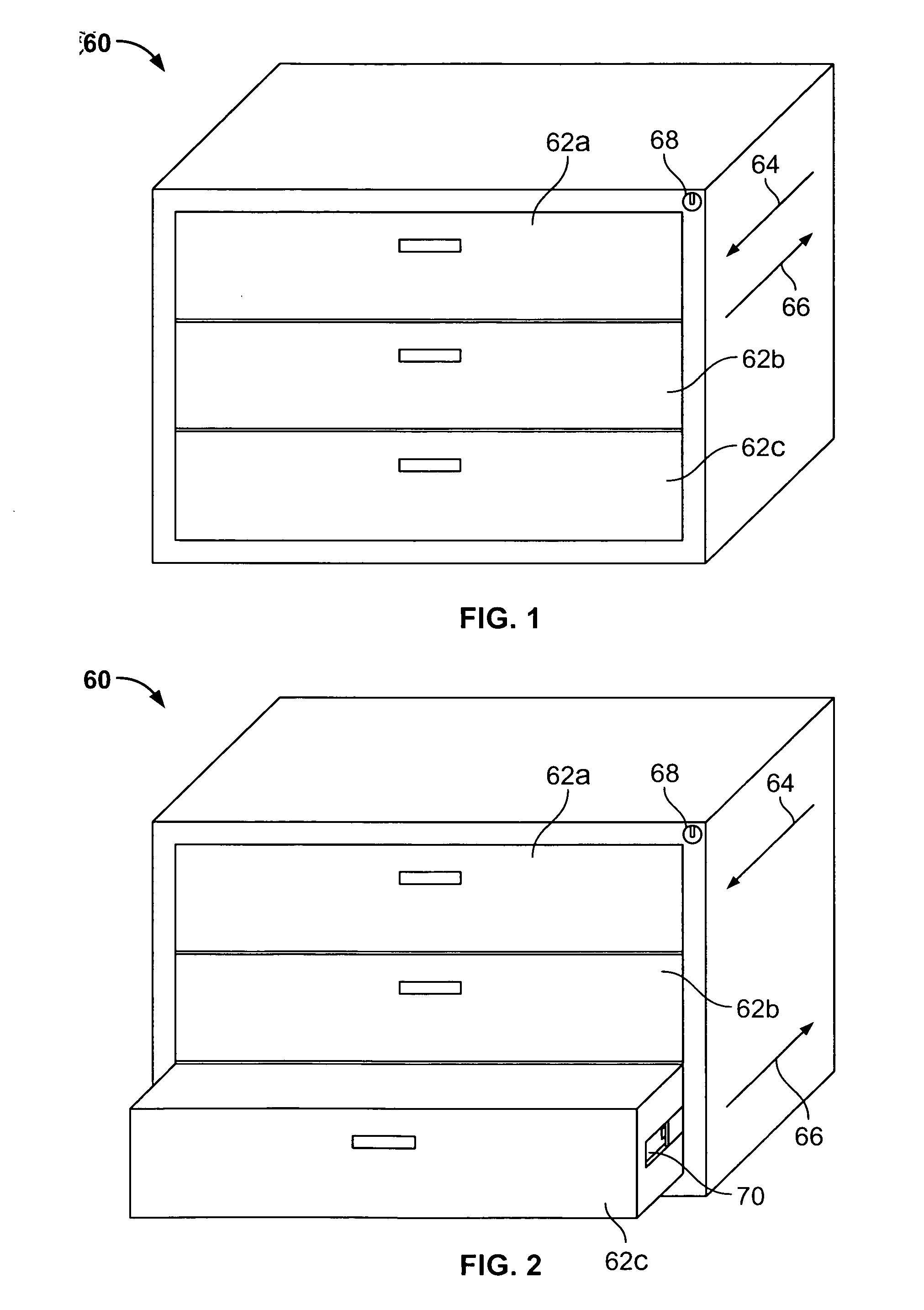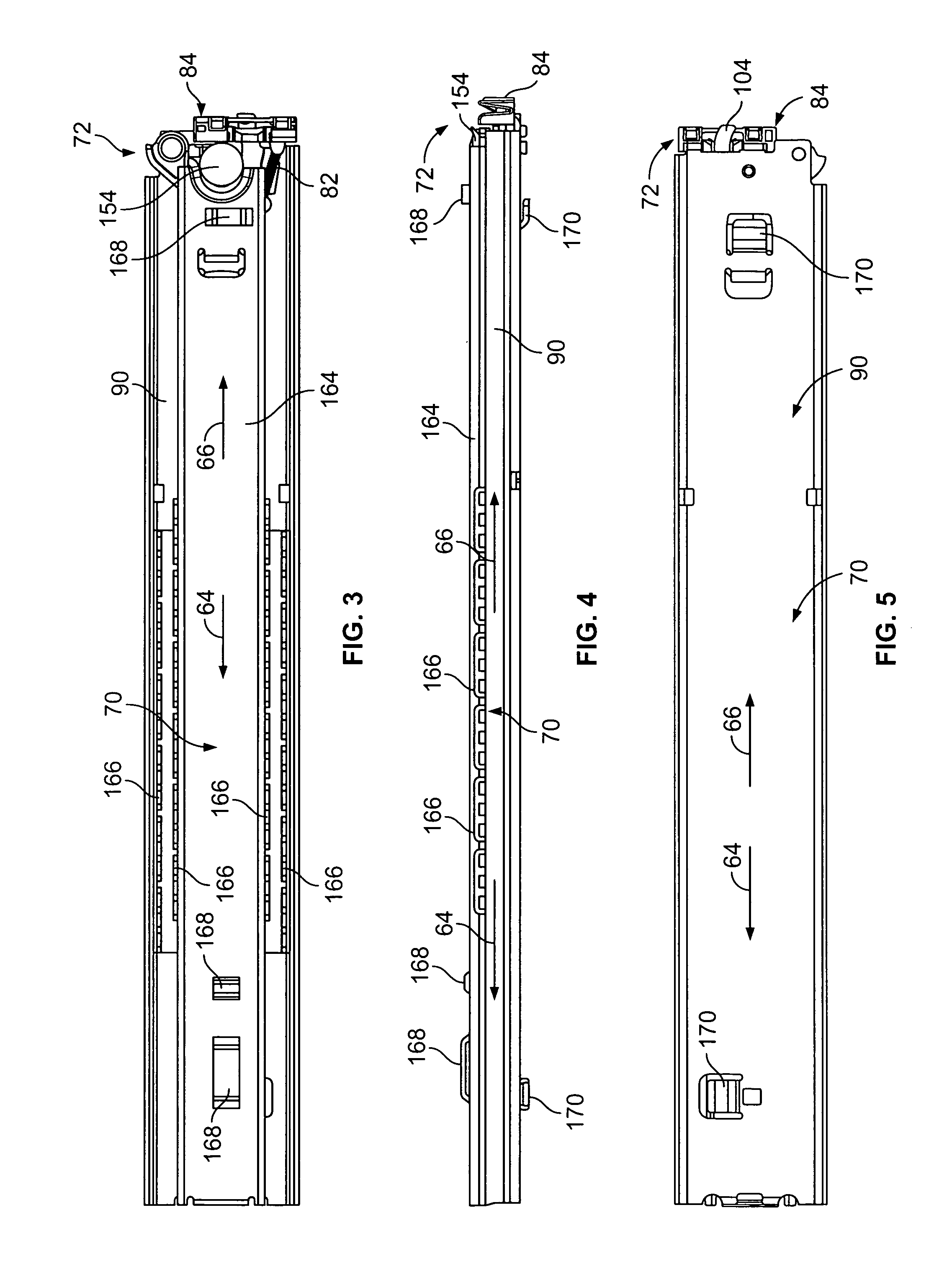Interlock mechanism for lateral file cabinets
a technology for locking mechanisms and file cabinets, which is applied in the field of filing cabinets, can solve the problems of adding additional cost to the process of reconfiguring cabinets, difficult to change the configuration of drawers in cabinets, and difficult to reconfigure drawers in cabinets, etc., and achieves the effect of easy installation and resistance to high forces
- Summary
- Abstract
- Description
- Claims
- Application Information
AI Technical Summary
Benefits of technology
Problems solved by technology
Method used
Image
Examples
Embodiment Construction
[0049] The present invention will now be described with reference to the accompanying drawings wherein the reference numerals in the following written description correspond to like numbered elements in the several drawings. The present invention relates to locks and interlocks that may be used with file cabinets, such as the file cabinet 60 depicted in FIGS. 1 and 2. File cabinet 60 includes three drawers 62a-c that are essentially stacked on top of each other in file cabinet 60. Each drawer can be pulled in a first direction 64 toward an open position. The lower most drawer 62c in FIG. 2 is illustrated in the open position. When it is time to close this drawer, it can be pushed in a second direction 66 back to its closed position. The interlocking system of the present invention prevents more than one drawer from being opened at a single time. While only three drawers are illustrated in file cabinet 60, the present invention is applicable to cabinets having any number of drawers. ...
PUM
 Login to View More
Login to View More Abstract
Description
Claims
Application Information
 Login to View More
Login to View More - R&D
- Intellectual Property
- Life Sciences
- Materials
- Tech Scout
- Unparalleled Data Quality
- Higher Quality Content
- 60% Fewer Hallucinations
Browse by: Latest US Patents, China's latest patents, Technical Efficacy Thesaurus, Application Domain, Technology Topic, Popular Technical Reports.
© 2025 PatSnap. All rights reserved.Legal|Privacy policy|Modern Slavery Act Transparency Statement|Sitemap|About US| Contact US: help@patsnap.com



